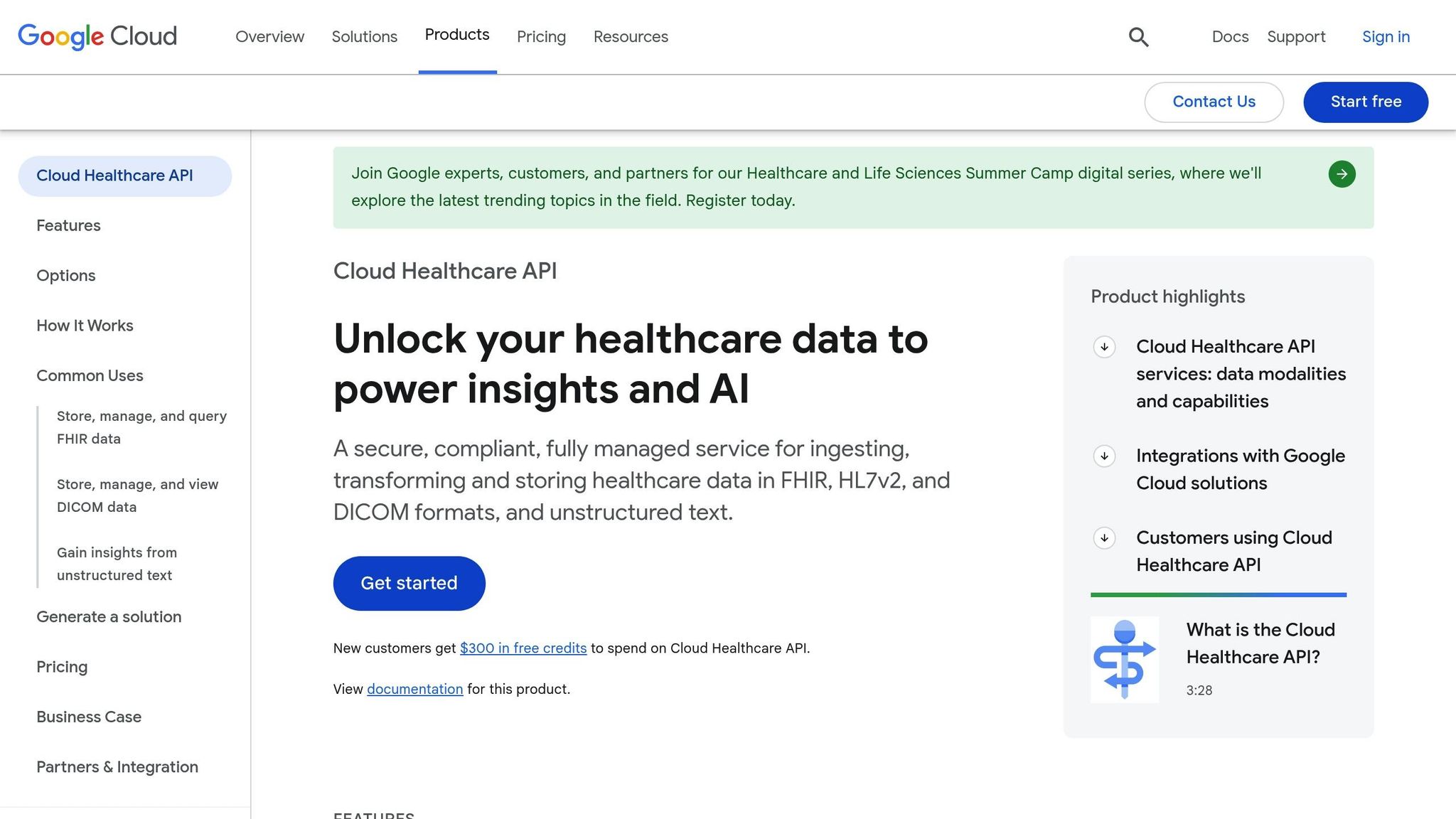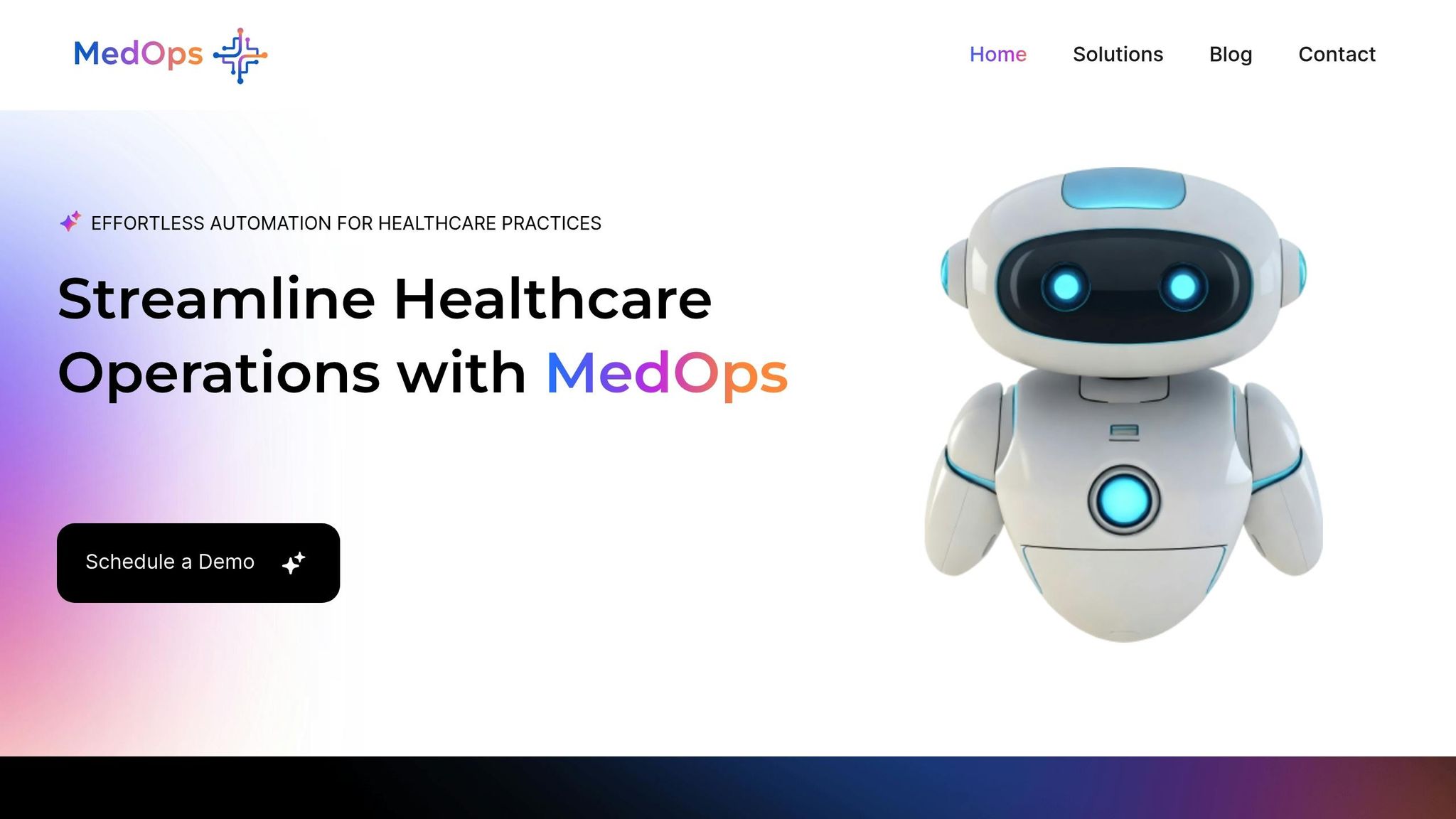Explore how AI-powered APIs enhance data sharing and operational efficiency in healthcare, outperforming traditional solutions.
APIs play a crucial role in healthcare by ensuring accurate data sharing and smooth operations. When they fail, the consequences can be severe - delays in patient care, compliance issues, and increased manual work. For healthcare organizations, uptime, secure data transmission, and real-time updates are non-negotiable.
This article compares MedOps, an AI-powered healthcare API, with conventional alternatives. MedOps stands out by offering:
In contrast, traditional APIs often rely on batch updates, lack robust testing environments, and provide generic error handling.
Key takeaway: If your healthcare system requires instant data access, compliance support, and minimal downtime, MedOps offers a strong solution.


MedOps provides an AI-powered API designed to streamline healthcare operations by integrating seamlessly with Electronic Health Records (EHR). This integration ensures healthcare providers always have access to the most up-to-date patient information, helping them make quicker and more informed decisions.
"The integration of AI with Electronic Health Records (EHR) systems offers a new level of efficiency and accuracy." - MedOps
Traditional healthcare APIs often fall short when it comes to meeting the intricate demands of real-time healthcare operations and seamless integration. Let’s dive into how conventional approaches measure up against the more advanced capabilities of MedOps.
Traditional APIs typically provide documentation that outlines basic endpoints and authentication methods. While this may seem sufficient on the surface, these documents often lack the depth developers need for more intricate healthcare integrations. Key elements like detailed examples or use-case scenarios are frequently missing, leaving teams - especially those without specialized IT expertise - struggling to piece things together.
Most conventional API documentation includes REST endpoint references, basic authentication instructions, and a handful of code samples. While functional, this approach forces developers to spend extra time deciphering complex healthcare data formats and navigating compliance requirements.
Unlike MedOps' continuous updates, many traditional APIs rely on batch processing to update data at scheduled intervals. This delay can be a major drawback, especially during critical moments when healthcare providers need the most up-to-date patient information. Waiting for the next batch update could mean missing crucial details during time-sensitive decision-making.
Traditional APIs often come with high uptime guarantees, ensuring they can handle day-to-day operations. However, these guarantees usually exclude maintenance windows. During these scheduled updates or infrastructure improvements, systems may temporarily go offline. For healthcare organizations, even brief downtime can disrupt workflows, especially during peak demand periods, forcing them to plan around these interruptions.
Testing environments provided by traditional APIs often leave much to be desired. While sandbox environments are included, they typically rely on synthetic data that fails to mimic the complexities of real-world healthcare scenarios. This gap can lead to significant challenges when moving from testing to live environments, with developers needing extra time to address unforeseen compatibility issues.
Error handling in traditional systems tends to be generic, often limited to standard HTTP error codes and logs. While this might suffice for technical troubleshooting, it falls short in identifying healthcare-specific validation issues. Developers are left navigating unclear error messages, which can slow down resolution times and complicate clinical integrations. MedOps, by contrast, takes a more nuanced approach to error management, addressing both technical and healthcare-specific challenges directly.
When assessing API solutions, it's essential to weigh MedOps' strengths in healthcare-specific functionalities against potential challenges.
| Aspect | MedOps Advantages | Considerations |
|---|---|---|
| Documentation | Offers detailed healthcare-specific guides with use cases and compliance frameworks. | Teams unfamiliar with advanced healthcare integrations may face a learning curve initially. |
| Data Synchronization | Enables real-time updates, granting immediate access to critical patient information. | Real-time streaming can demand higher system resources. |
| Uptime & Reliability | Designed for 24/7 healthcare operations with minimal planned downtime. | Custom implementations may require additional setup time upfront. |
| Testing Environment | Provides a realistic sandbox with healthcare-compliant test data mirroring production scenarios. | Smaller practices might find advanced testing features overly complex. |
| Error Handling | Delivers detailed error messages tailored to both technical and clinical issues. | The comprehensive error reports might feel overwhelming at first. |
| Cost Structure | Custom pricing ensures you only pay for the features you need. | Transparent pricing requires direct consultation, which may delay decision-making. |
These features directly impact daily operations. For example, MedOps' real-time synchronization ensures patient insurance details are updated instantly, empowering clinical teams to make timely decisions.
The platform's healthcare-specific documentation, including HIPAA guidelines and HL7 FHIR examples, simplifies integration processes, saving valuable time. Moreover, its scalable design can handle everything from routine check-ins to emergency surges, all while minimizing the need for extensive staff training.
If your organization prioritizes immediate data access and tailored healthcare functionality, MedOps is a strong contender. Its real-time updates and reliable architecture can help streamline workflows and enhance patient care, even if there’s a learning curve during the initial setup.
MedOps addresses the distinct challenges faced by the U.S. healthcare system. By focusing on regulatory compliance and real-time data sharing, it enables healthcare providers to handle sensitive patient information efficiently while supporting swift decision-making.
This makes MedOps particularly well-suited for critical healthcare settings in the U.S. Here’s why it stands out:
MedOps transforms healthcare by offering real-time access to patient data through an AI-powered platform. This platform brings together essential information, automates verification processes, and ensures instant availability of detailed patient records. The result? Healthcare providers can make quicker, well-informed decisions that elevate patient care and improve operational efficiency.
Unlike traditional APIs, MedOps takes care coordination to the next level. It reduces errors, speeds up response times to patient needs, and simplifies workflows. These advancements not only support better clinical outcomes but also create a smoother, more efficient experience for both healthcare professionals and patients.
MedOps delivers thorough API documentation featuring step-by-step instructions, detailed explanations of features, and strong security guidelines to help developers navigate EHR integration with ease. The goal is to streamline the process and minimize the risk of errors during implementation.
To further aid integration, MedOps provides a developer sandbox that mimics real-world EHR systems. This testing environment allows developers to safely test data exchange, functionality, and security measures before launching. These resources ensure smooth, secure, and reliable interoperability with EHR systems, giving developers peace of mind as they build their integrations.
MedOps is built specifically for healthcare providers, putting regulatory compliance and system dependability front and center. It strictly follows HIPAA requirements, incorporating strong data security protocols, access management, and audit trails to safeguard sensitive patient data.
The platform also features integrated validation tools and comprehensive auditing capabilities, helping healthcare organizations meet industry regulations while reducing the chance of compliance issues. On top of that, MedOps aligns with cutting-edge interoperability standards like FHIR, ensuring secure and efficient data sharing across systems for smooth integration and consistent performance.